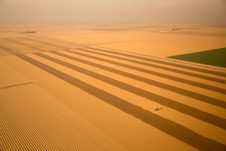
For several months, California has been in a state of exceptional drought. The state's usually verdant Central Valley produces one-sixth of U.S. crops.
With no ground- or satellite-based global network monitoring soil moisture at a local level, farmers eagerly await NASA's Soil Moisture Active Passive (SMAP) satellite. The mission, scheduled to launch this winter, will collect the kind of local data agricultural and water managers worldwide need.
SMAP uses two microwave instruments to monitor the top 2 inches (5 centimeters) of soil on Earth's surface. Together, the instruments create soil moisture estimates with a resolution of about 6 miles (9 kilometers), mapping the entire globe every two or three days. Although this resolution cannot show how soil moisture might vary within a single field, it will give the most detailed maps yet made.
Agricultural drought occurs when the demand for water for crop production exceeds available water supplies from precipitation, surface water and sustainable withdrawals from groundwater, said Forrest Melton, a research scientist in the Ecological Forecasting Lab at NASA Ames Research Center in Moffett Field, Calif.
Based on snowpack and precipitation data in California, by March we had a pretty good idea that by summer we'd be in a severe agricultural drought, added Melton. But irrigation in parts of India, the Middle East and other regions relies heavily on the pumping of groundwater during some or all of the year.
Underground water resources are hard to estimate, so farmers who rely on groundwater have fewer indicators of approaching shortfalls than those whose irrigation comes partially from rain or snowmelt. For these parts of the world where farmers have little data available to help them understand current conditions, SMAP’s measurements could fill a significant void.
Image courtesy of NASA/White House via Wikimedia Commons.

